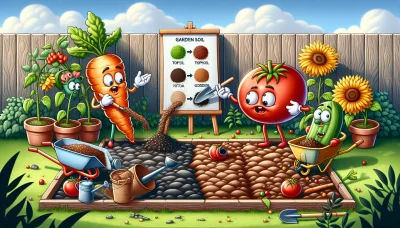Rambutan season Quiz
Test Your Knowledge
Question of
Understanding Rambutan Season
Rambutan season typically occurs during the late spring and lasts through early fall, aligning closely with the wet season in tropical regions where rambutan trees thrive. This period, which can vary slightly depending on the specific climate and location, is when the rambutan fruit reaches its peak ripeness and is harvested. The exact timing of the season can be influenced by weather patterns, but it generally falls between May and October in most countries that cultivate rambutan.
The Ideal Climate for Rambutan
Rambutan thrives in a tropical climate, where conditions are typically warm and humid throughout the year. The ideal temperature range for growing rambutan is between 22 to 30 degrees Celsius. This fruit tree prefers regions with a pronounced rainy season followed by a dry period, which helps in the maturation and harvesting of the fruits. Excessive rain during flowering can adversely affect the crop, so a balance of weather conditions is crucial. Furthermore, rambutan trees are sensitive to strong winds and require protection from such conditions to prevent damage to both the trees and the developing fruit.
Preparing Your Garden for Rambutan Season
- Choose a planting location that receives ample sunlight and has well-draining soil.
- Test the soil pH to ensure it is slightly acidic, between 5.5 and 6.5, which is ideal for rambutan trees.
- Enrich the soil with organic compost or manure to provide essential nutrients for the growing trees.
- Ensure the planting area is spacious enough, as rambutan trees can grow quite large and require room for their roots to expand.
- Water the soil thoroughly before planting to ensure it is moist, creating an ideal environment for young rambutan trees.
- Plant rambutan trees during the warmer months to ensure they have enough time to establish themselves before cooler temperatures arrive.
- Regularly water the trees, especially during dry spells, to maintain consistent soil moisture.
- Apply mulch around the base of the trees to help retain soil moisture and regulate soil temperature.
- Prune any dead or overcrowded branches to encourage healthy growth and fruit production.
- Monitor for pests and diseases and address any issues promptly to keep the trees healthy.
Caring for Your Rambutan Tree
To ensure your rambutan tree thrives during its growing season, it's essential to provide it with the right care. Watering is crucial, especially during dry periods. Aim to keep the soil consistently moist but not waterlogged. Fertilizing is also important; use a balanced fertilizer every month during the growing season to support healthy growth and fruit production. Pruning should not be overlooked, as it helps to maintain the tree's shape, remove any dead or diseased branches, and encourage better air circulation through the canopy. By following these practices, you can help your rambutan tree produce delicious fruit for years to come.
Pest and Disease Management in Rambutan Cultivation
Rambutan trees, like any other crop, are susceptible to various pests and diseases that can significantly impact their growth and fruit production. Common pests include fruit flies, which lay their eggs on the fruits, and rambutan seed borers, which affect the seeds of the fruit. To manage these pests, farmers can use pheromone traps to attract and capture adult flies and ensure regular sanitation by removing and destroying infected fruits from the trees and the ground. Diseases such as anthracnose, caused by fungal pathogens, can lead to fruit rot and leaf spot. Managing these diseases involves applying appropriate fungicides and ensuring good air circulation through regular pruning. Implementing integrated pest management (IPM) strategies, which combine biological, cultural, physical, and chemical tools, is crucial for sustainable pest and disease management in rambutan cultivation.
Harvesting and Storing Rambutans
Rambutans are ripe for harvesting when their skin turns from green to a deep red or yellow color, depending on the variety. The fruit should feel slightly soft to the touch. After harvesting, rambutans can be stored at room temperature for a few days. For longer storage, placing them in a perforated plastic bag in the refrigerator can extend their freshness up to two weeks. It's important not to wash the fruits until you're ready to eat them, as moisture can accelerate spoilage.
Rambutan Varieties to Grow
| Variety | Characteristics | Growing Conditions |
|---|---|---|
| Rongrien | Large fruit size, sweet taste | Thrives in humid, tropical climates with well-drained soil |
| Chompuu | Pinkish hue, slightly acidic flavor | Requires full sun exposure, tolerates occasional drought |
| Binjai | Small to medium fruit, very sweet | Needs high humidity, fertile soil, and regular watering |
| Seematjan | Distinctive aroma, balanced sweet and sour taste | Prefers partial shade to full sun, moist soil conditions |
| Sijuk | Thick flesh, mildly sweet | Adaptable to various soil types, but requires good drainage |












